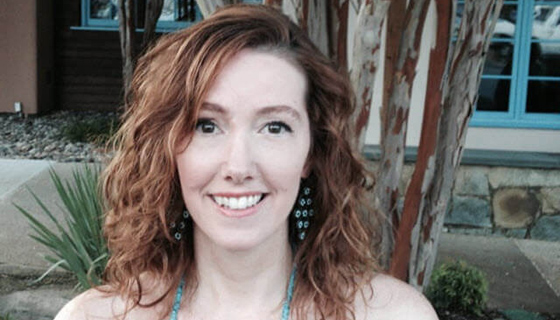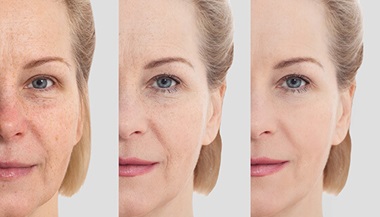Nose Reshaping (Rhinoplasty)
The nose is the most defining characteristic of the face, and even a slight alteration in its size or shape can greatly change a person's appearance. The goal of cosmetic rhinoplasty is to improve the nose aesthetically, creating harmony with the other facial features.
Rhinoplasty can also help reshape the interior of the nose so a person can breathe more easily. Rhinoplasty is the medical name for surgical procedures that some people call a "nose job," "nose reshaping" or "nasal surgery." It involves the surgical reconstruction and shaping of the bone and cartilage to enhance the appearance or function of the nose.
Consulting a Plastic Surgeon for Rhinoplasty
People desire rhinoplasty surgery for different reasons. Some have trouble breathing through the nose. Others have had traumatic injury to the face and wish to correct the resulting asymmetry. Many rhinoplasty patients simply want to improve their appearance by altering the size or shape of the nose to make it more harmonious with their features.
Patients born with a defect that affects the development of the nose often benefit from rhinoplasty. These defects include:
- cleft lip
- craniosynostosis
- frontonasal dysplasia
- Tessier clefts
- Treacher Collins syndrome
- Apert syndrome
- Hemangiomas
- vascular malformations
It is important to consult with an expert facial plastic surgeon who specializes in rhinoplasty. During the consultation, the surgeon will take photographs and ask about the person's:
- Skin type
- Ethnic background
- Age (Unless severe breathing problems are present, the person should be age 15 or older)
- History of previous surgery or trauma
- History of nasal obstruction or breathing problems
In addition, the surgeon will explain:
- How the nasal bones and cartilage can be sculpted to reshape the nose
- What the person can expect from the procedure
- Where the surgery will take place
- Options for anesthesia
- Possible complications
Other recommended procedures may be discussed, such as a chin implant, to balance the facial features.
Rhinoplasty: Procedure and Care
Rhinoplasty can take place in the surgeon's office-based surgical facility, an outpatient surgery center, or in a hospital.
Before the surgery, the surgeon will conduct a thorough history and examination and assess whether or not the reconstruction will require harvesting the person's own tissue, such as skin or cartilage, to reconstruct the nose.
Regardless of the type of procedure, the surgeon will ensure the person is comfortable by using anesthesia. General anesthesia causes a deep sleep during surgery while a combination of mild sedative medications and local anesthesia allows the patient to remain awake but relaxed and pain-free throughout the procedure.
Once the person is under anesthesia, the surgeon may make the initial incision on the underside of the nose then move the skin to gain access to the bone and cartilage beneath. The surgeon may use a scalpel to remove excess cartilage and a delicate instrument called an osteotome to carefully shape the bone.
While performing cosmetic surgery to improve the appearance of the nose, the surgeon may also surgically address issues in the nasal airway to improve nasal breathing. Some examples of this procedure are:
- Nasal septoplasty to straighten a deviated nasal septum, the internal wall that separates the two nasal cavities
- Inferior turbinate reduction to address membrane-covered bony structures within the nose that can become enlarged due to allergies or sinus problems
- Nasal valve repair to strengthen or enlarge abnormally narrow places within the nose
- Cartilage grafts to strengthen and support the nose during rhinoplasty or nasal airway surgery. Most of these grafts are taken from the nasal septum (from within the nose) or, in more complex surgeries, from behind the ear or from the chest wall (rib cartilage.)
After Surgery
Immediately after surgery, the surgeon will often put a small splint on the patient's nose to protect it and keep the new structure stable. The splint should stay on for at least five days. If the surgeon has packed absorbent dressings inside the patient's nose following surgery, the packing comes out a day or two later.
The surgeon is likely to use absorbable sutures (stitches) inside the nose; these will dissolve over time and do not need to be removed. If there are external sutures, these may be removed a week or so after surgery.
What Most Patients Can Expect
- Swelling of the nose may persist for several weeks. It takes a year or more for all the swelling in the nose to resolve, but most patients see improvement in their appearance within a few weeks.
- Pain or discomfort can be relieved with cold compresses, or the surgeon may prescribe pain medication.
- Facial swelling and puffiness is most obvious the first day after surgery.
- Minor bruising or swelling around the eyes is common.
- Most people find they can return to work or school in one week.
Note: These are general guidelines only. The surgeon will discuss each individual's reasonable expectations for the post-surgery period.
It is extremely important to follow the surgeon's postsurgery instructions carefully, especially:
- Avoid blowing the nose for two or three weeks after surgery.
- Keep head elevated while sleeping for the first three days.
- Stay out of the sun.
- Take care to avoid exertion and minimize risk of any injuries.
- Alert the surgery team immediately in the event of any problem or unexpected change, including:
- A fever greater than 101 degrees
- Excessive bleeding
- Uncontrolled pain
- Skin rash
- Visual disturbance
- Any other unusual symptoms.
- Keep all follow-up appointments after surgery.
Seminar Saving Face: Advice to Help Freshen Aging Skin

Age-related changes to the face don’t have to be noticeable. Learn about surgical and nonsurgical options to address signs of aging from Dr. Kofi Boahene.






